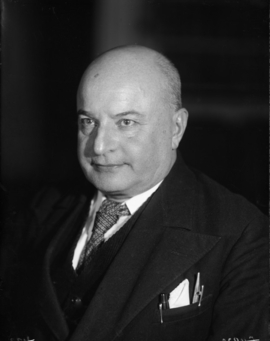Alekseev Vasily (1881–1951) – leading Russian specialist of the first half of the twentieth century in Chinese studies, translator, researcher in the field of Chinese traditional literature, folk art, and religion; member of the Russian Geographical, and Archeological Societies; Academician of the Ac. of Sc. of the U.S.S.R.. Corresponding Member of the State Bejing Library since 1929; Member of the National Geographical Society in Washington since 1946; member of the Union of Soviet Writers; Honorary Member of the American Oriental Society since 1947; collector of Chinese folk drawings and prints, calligraphy (including inscriptions and amulets), and printings from ancient stone slabs.
In 1898-1902, studied at the Faculty of Oriental Languages of the St. Petersburg University at the courses of V. P. Vasiliev, A. O. Ivanovsky, D. A. Peshurov, A. M. Pozdneev; A. started his scholarly work at the Asian Museum of the Ac. of Sc.; in 1904, he became Assiatant at the Faculty of Oriental Languages of the St. Petersburg University. In 1904-1906, 1911, 1923, he had probation in Europe; in 1906-1909, 1912, and in 1926, made research trips to China; in 1907, he took part in the archeological expedition in the Northern China headed by famous French Sinologist E. Chavannes. In 1909, A. made one of the first public lectures in the Geographical Society on Chinese temple and Chinese folk drawings and prints of religious content; in 1917, by the jubilee of V. V. Radlov, he published an article where – for the first time – studied a plot from Chinese folklore about the ‘heavenly twins He He’ on the base of images from his own collection. In 1919-1929, he was a senior researcher at the Academy of the History of Material Culture, where he took part in organization the so called Buddhist exhibition; he also made lectures ‘Buddhism and Christianity in the folk religion ad culture of China’. In 1930, he got the position of the Head of the Chinese Cabinet of the Institute of the Oriental Studies of the Ac. of Sc. of the U.S.S.R.; he cooperated with the Institute of the Buddhist Culture. In 1938-1941, he worked out a cycle of exhibitions on Chinese folk religion at the Museum of the History of Religion in Leningrad, and took part in the work at the constant exhibition ‘Religions of China’. In 1944, he got the position of the Head of the Department of Chinese Philology at the Leningrad State University, he also supervised the work on the Chinese-Russian dictionary which was to be published.
In the course of his travels through the Northern China as a participant of the expedition of E. Chavannes, A. wrote a working diary – ‘handwritten notes in Russian and in Chinese’, the most part of which in 1951, after his death, was published by the widow of the Academic N. M. Alekseeva, and his daughter M. V. Ban’kova in the book ‘In Old China. Diaries of the Travels of 1907’. A special place in these notes is given to the Chinese religious syncretism, and to the
spiritual basement of Chinese folk culture. In 1966, B. L. Riftin gathered and prepared for publication materials of A., who had already died by that moment, on Chinese folk art; the book was published under the title ‘Chinese Folk Drawing; Spiritual Life of Old China in Folk Images’. For the first time in Russian Sinology, on the base of imagery from the private collection of V. M. Alekseev, they gave scholarly interpretation to religious plots and personages of Chinese folk drawings and prints.
Among the disciples of A., there were such outstanding Russian specialists in Chinese studies, as I. S. Gurevich, L. N. Men’shikov, V. А. Welgus, О. L. Fishman, B. B. Vakhtin, R. F. Its, I. E. Tsiperovich.

